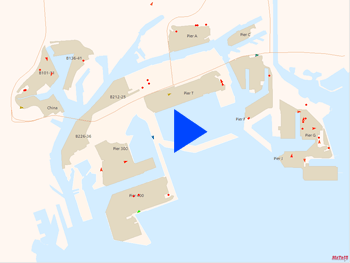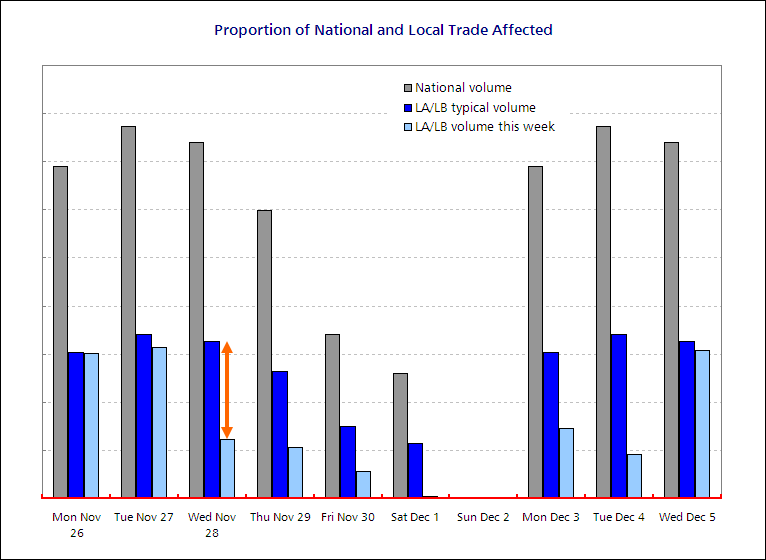
Metropolitan Transport Information System
by Digital Geographic Research Corporation
25+ years innovating
- HOME
- PRODUCTS & SERVICES
- RESOURCES
News & Commentary News & Press Reports Light Technical Geography 80-20 (nuggets for adults) Geography Kids' Hangout Technical METRIS Publications GIS Publications Associated projects NCRST VITAL
- ABOUT
METRIS News
2012-12-05Long Beach and Los Angeles Ports Operated at 30-40% Due to Strike
We estimate that the ports of Long Beach and Los Angeles operated at 30-40% of typical intensity, due to a labor strike at marine container terminals. On Tuesday December 4, it was less than 30%. A deal to end the strike was announced early this morning.
The animations and statistics below are based on a sample of METRIS-equipped trucks that service the ports.
Long Beach terminals were relatively well off, with only Pier F (LBCT), Pier G (ITS) and Pier T (TTI) affected.
Animation of Port Truck Activity
The animation, based on GPS traces, compares activity on a typical Thursday evening (November 15) with last Thursday evening (November 29), during the busy 6-8 pm period.

wmv (recommended for all Windows computers)
mp4 (Mac/iPad, Windows 7)
swf (Flash)
Count of Truck Visits

In the chart above, the difference between the dark and light blue columns (indicated by the orange arrow in the case of Wednesday) shows the shortfall in truck visits to marine terminals compared with a typical day. To the extent that this proportionately represents trade volume, we also estimate typical national port trade volume, based on the annual share of trade that Long Beach and Los Angeles conduct. Because these are estimates based on truck visits from the METRIS-equipped sample, not container counts or dollar value, the chart is not numerically graduated.
Distance Driven by Port Trucks

This chart shows the difference between a typical driving day and the strike-impacted days. Some carriers weather the situation better than others, depending on their business model. Those that haul containers long distances — as far as Phoenix and Denver — are better equipped to handle a port disruption.